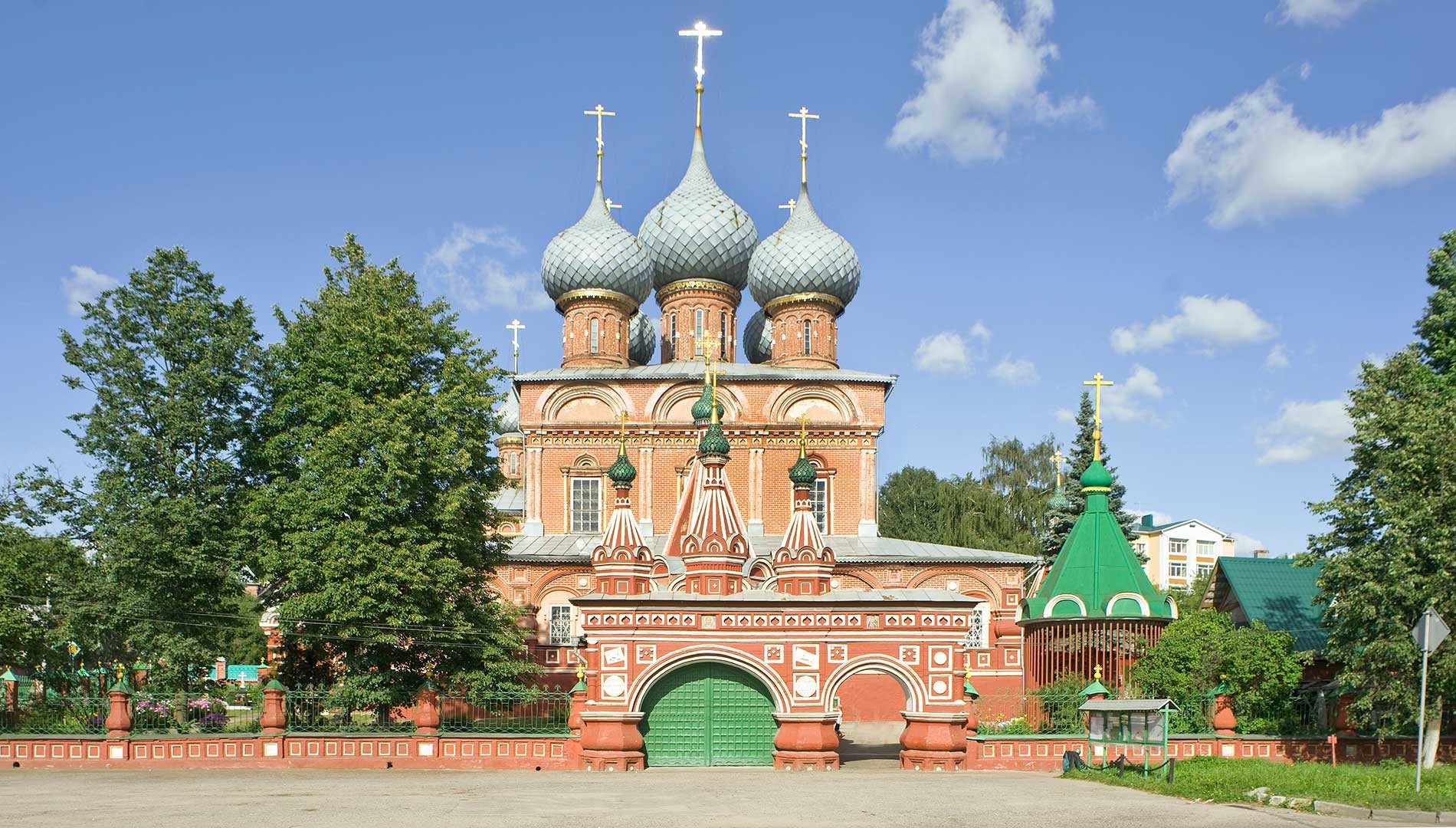
Kostroma. Church of the Resurrection "na Debre". West view. August 12, 2017.
William BrumfieldAt the beginning of the 20th
Support for the project came from the Ministry of Transportation, which facilitated his photography along Russia’s rail routes and waterways, including the Volga River. Of the many historic towns along the Volga, Kostroma rivals its neighbor Yaroslavl for the beauty of its churches and for the important role it has played in Russian history. Prokudin-Gorsky made two trips to Kostroma, in 1910 and 1911. My work in Kostroma spans a period from 1988 to 2017.
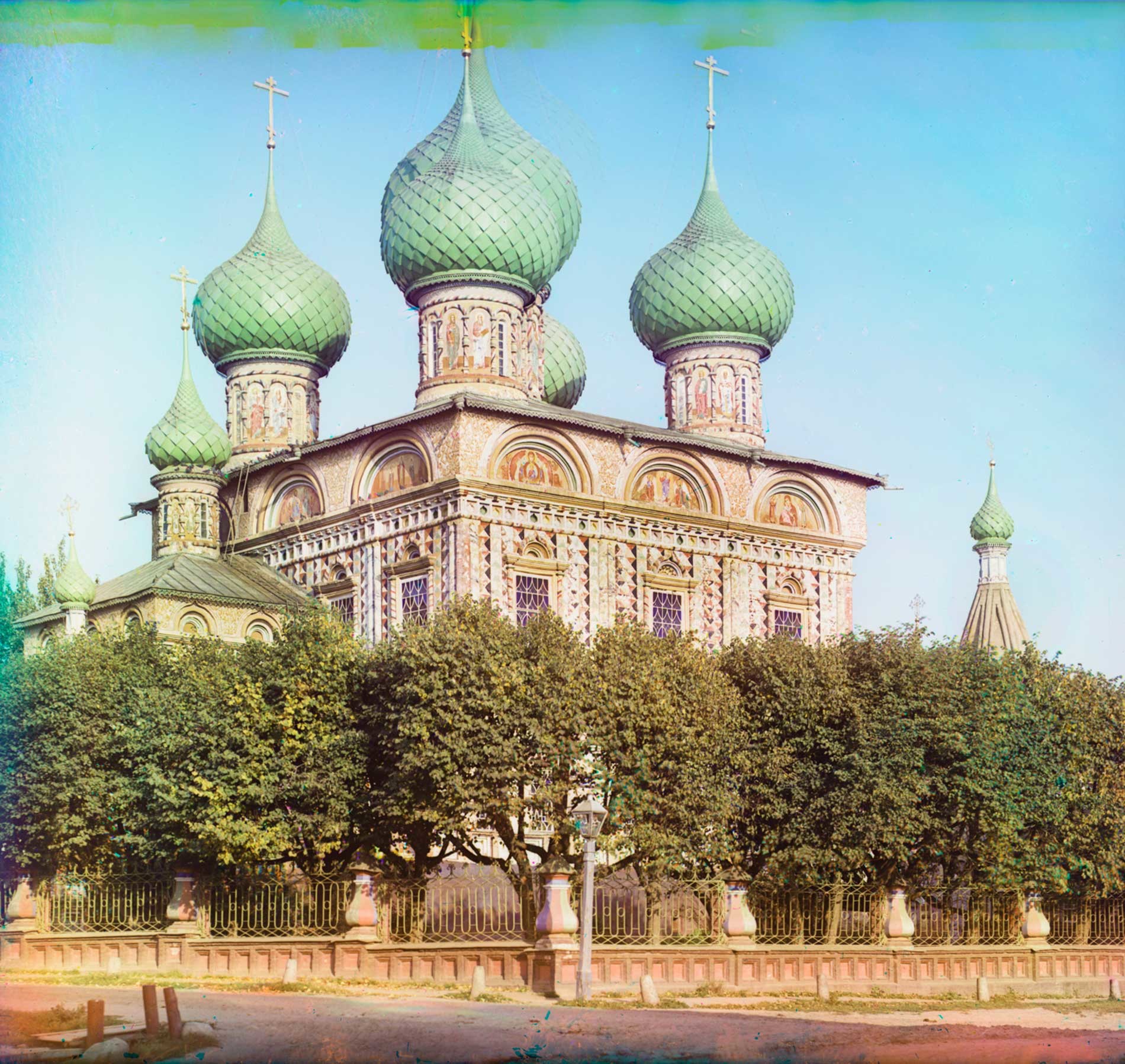
Kostroma. Church of the Resurrection "na Debre". Northwest view with Chapel of the Three Prelates. Summer 1910.
Sergey Prokudin-GorskyKostroma’s most colorful church — indeed, one of the most colorful in Russia — is located near the Volga River on the southern fringes of the town’s trading and crafts area (
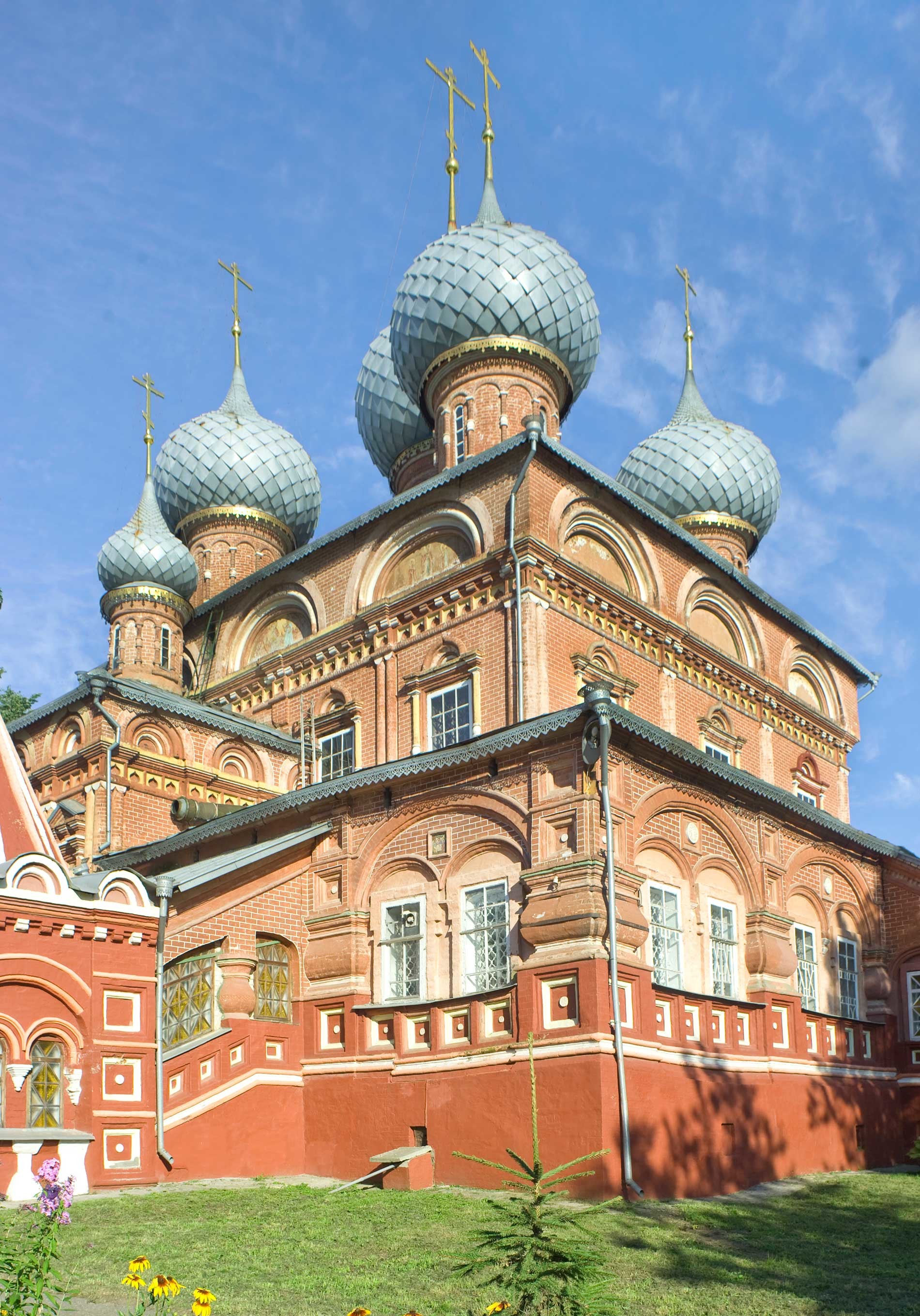
Church of the Resurrection "na Debre". Northwest view with Chapel of the Three Prelates. August 12, 2017.
William BrumfieldLegend has it that the church’s primary donor was one Kirill Isakov, a prosperous leather merchant whose wares were traded as far as England. Once, when opening small barrels of cloth dye from England, he discovered not dye, but gold coins. Suspicious of fate’s largesse (which could perhaps be the work of the devil), the astonished merchant decided — according to popular account — to donate the money for the construction of the church. The church construction was in fact covered by Isakov and other merchant parishioners.
The core of the church is a tall cuboid structure located on
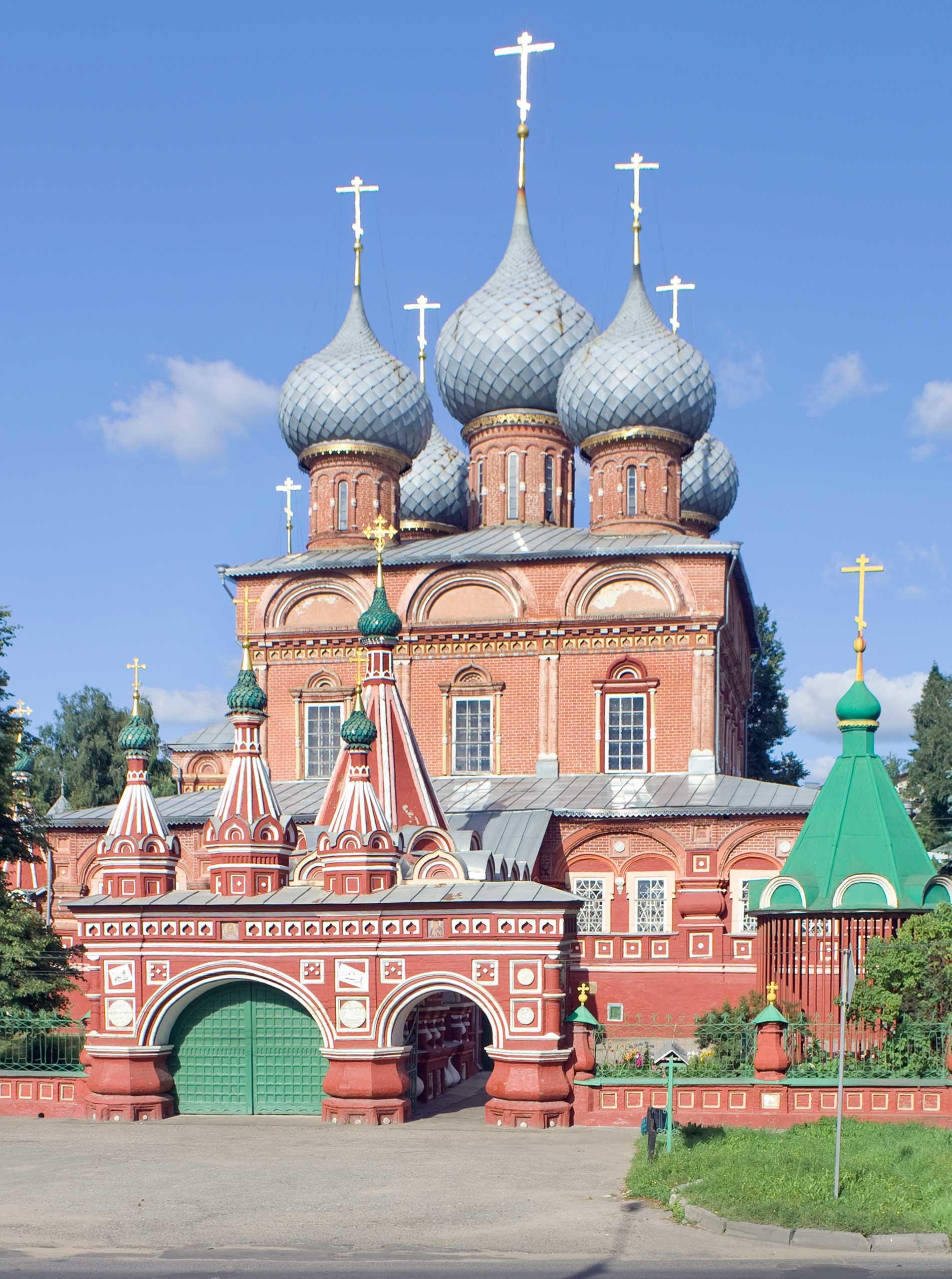
Church of the Resurrection "na Debre". Southwest view with gateway. August 12, 2017.
William BrumfieldThe ornamental saturation of the walls reached its limit with a painted trompe l’oeil diamond pattern clearly visible in Prokudin-Gorsky’s 1911 photograph. This pattern was popular in the late 17th and 18th centuries, as evidenced by the Church of the Hodegetria Icon in the Rostov kremlin. The wall pattern was redone in the 19th century. My photographs from 2017 show the walls repainted in red, with the diamond pattern remaining only on the elaborate apsidal structure, which contains the main altar, at the east side.
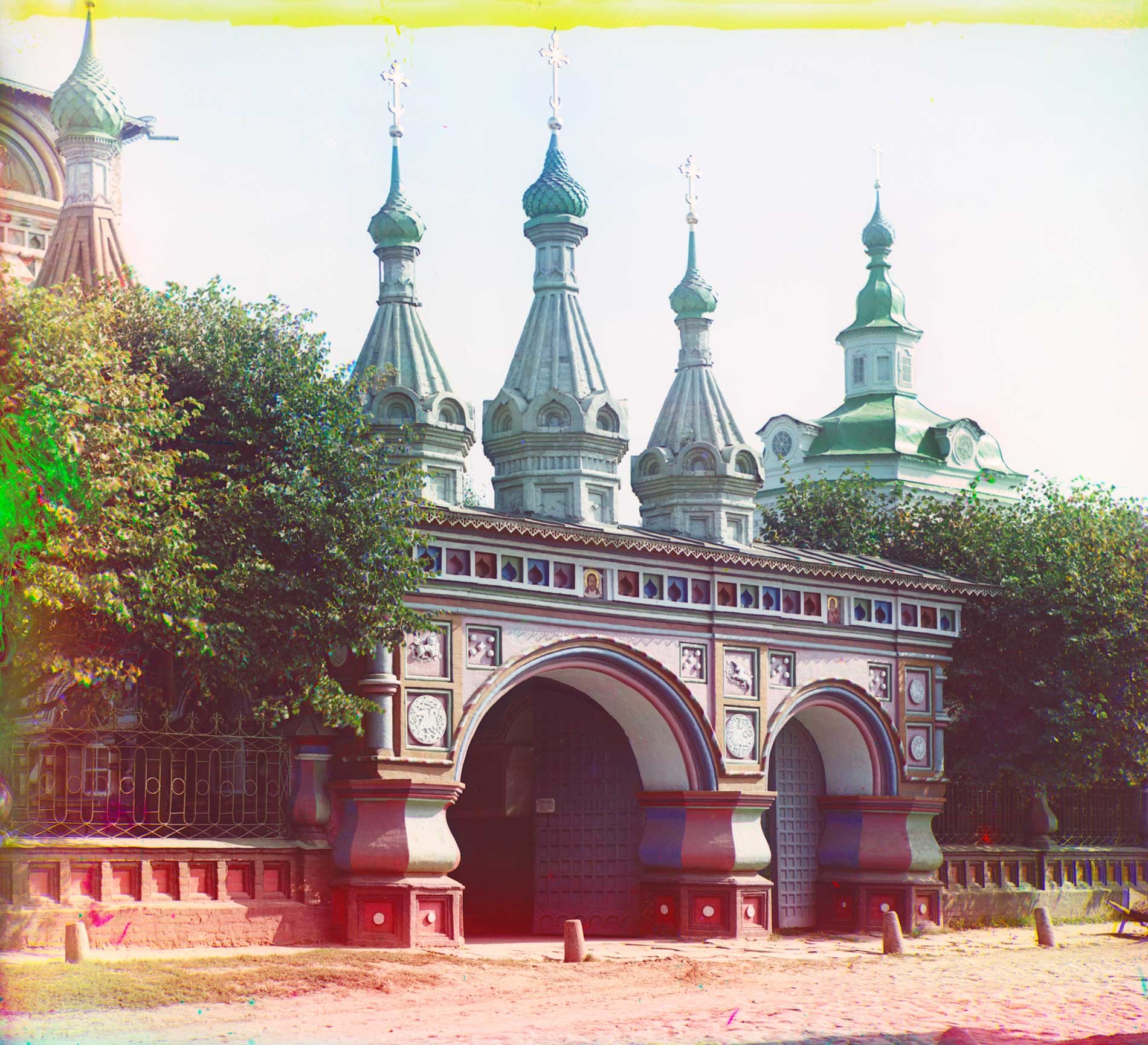
Church of the Resurrection "na Debre". Gateway. Background: dome of Church of Znamenie Icon. Summer 1910.
Sergey Prokudin-GorskyThe structure was enhanced with an elevated gallery extending along the north, west and south facades. Each of the gallery facades is segmented with paired windows set within large arches. The center of each gallery is graced by a stairway descending to an ornately decorated porch on the ground level. Each of the porches has an ornamental roofline with a conical cap supporting a small cupola. This design of porches and stairways leading to an elevated gallery also appeared in large wooden churches during the 17th century. The west gallery, containing the main portal, has the largest porch. Prokudin-Gorsky photographed it in detail, as did I in 2017.
In a final decorative accent, the church territory was enclosed by a fence whose west side, facing the main porch, had a gate structure in two sections, the larger of which was crowned with three ornamental turrets and cupolas. The gateway facade is decorated with coronet strips (like the porch), as well as relief carvings of horses and limestone medallions with carved images including a pelican and a lion, Prokudin-Gorsky’s photograph of the gateway shows a partially whitewashed façade. The limestone carvings are more clearly visible on the red façade of my 2017 photograph.
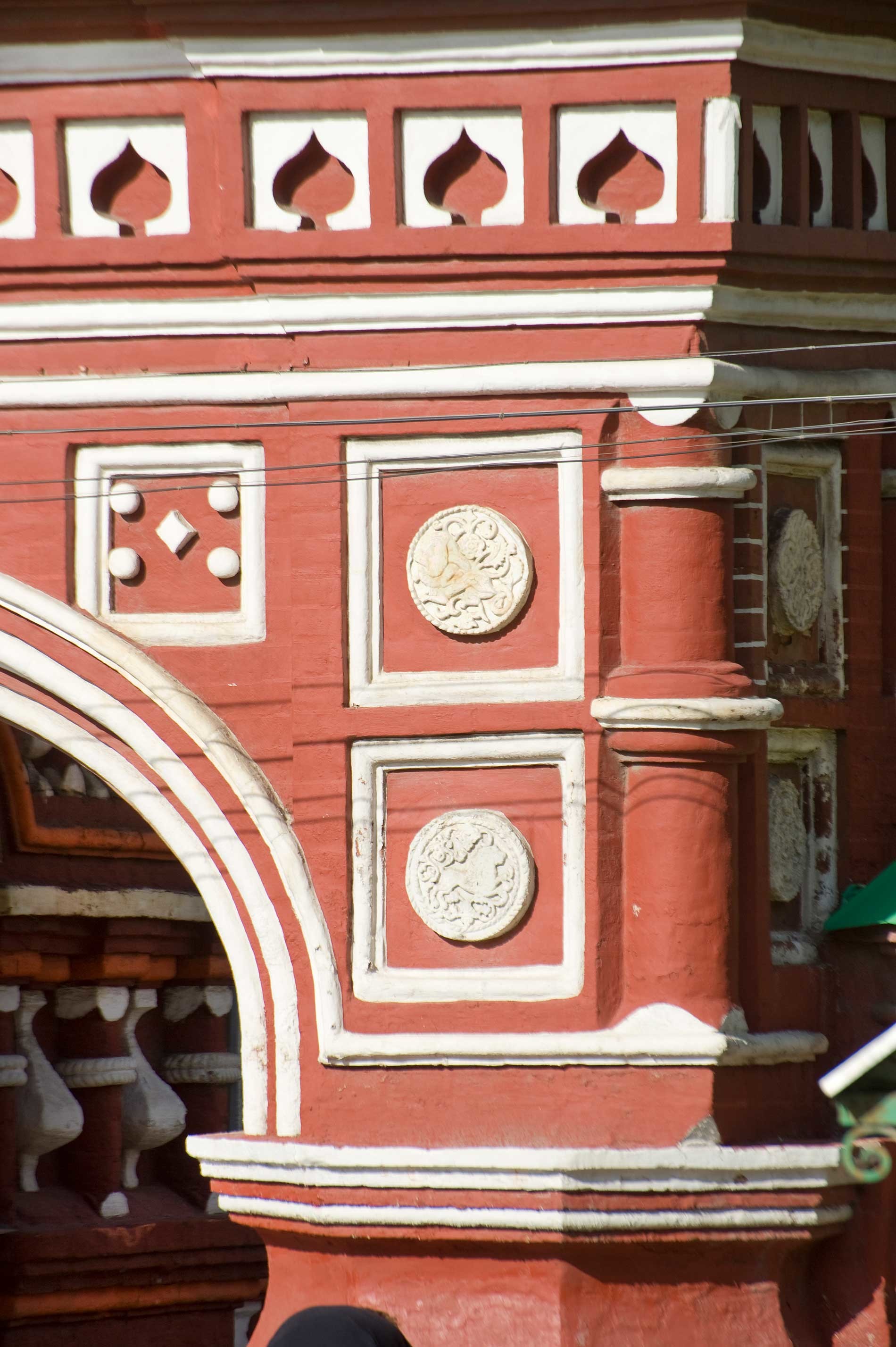
Church of the Resurrection "na Debre". Gateway, southwest corner with carved limestone medallions. August 12, 2017.
William BrumfieldThe interior of the church was painted with frescoes in 1650-52. Overpainted (“refreshed”) in1870, the frescoes of the main space were further damaged during the Soviet period. They were partially cleaned and restored in the 1960s. Unfortunately, there is no evidence that Prokudin-Gorsky photographed on the interior.
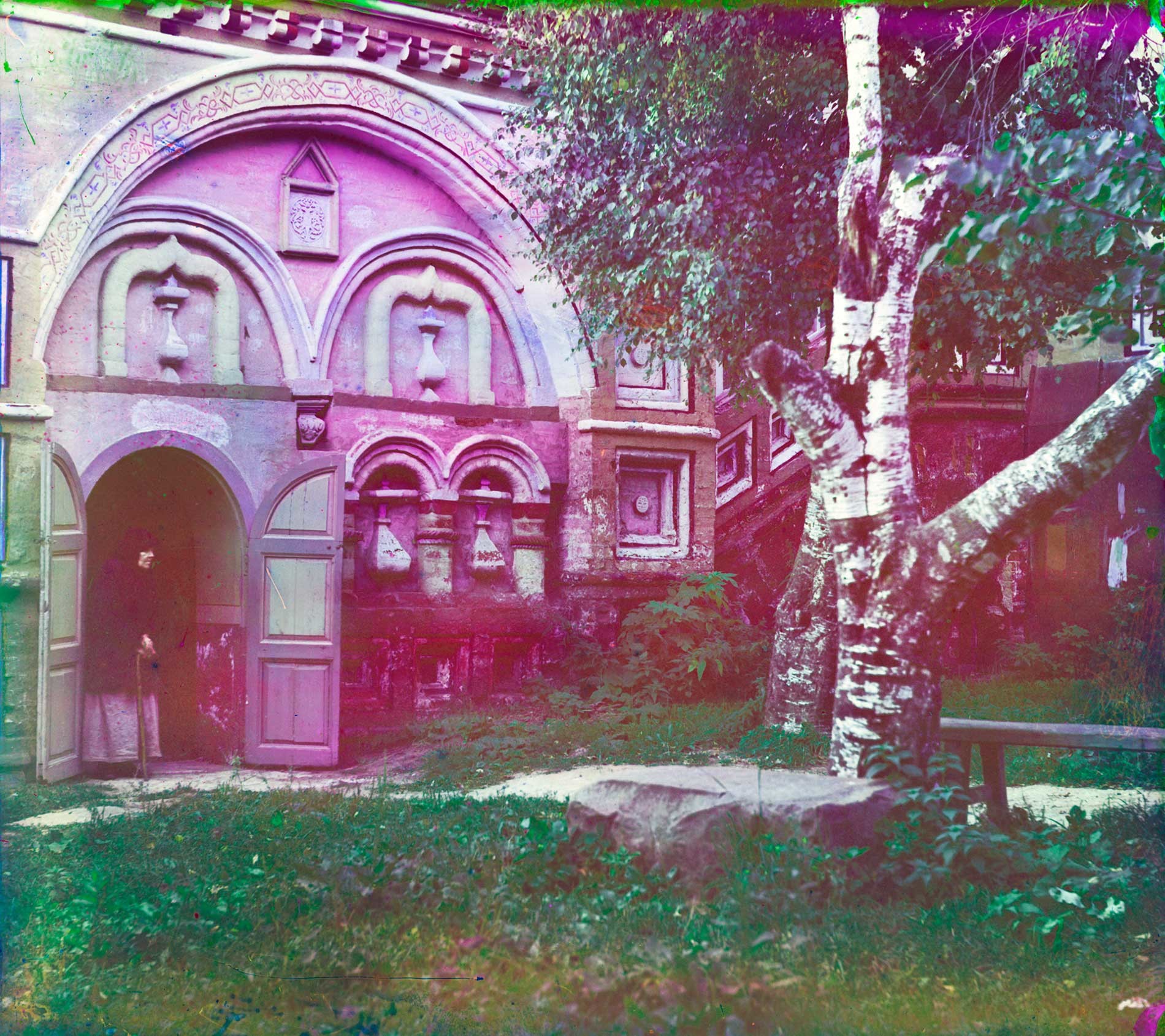
Church of the Resurrection "na Debre". West porch&stairway, south facade. Summer 1910.
Sergey Prokudin-GorskyAt the turn of the 19th century, a modest “winter” church, smaller in size and more easily heated for services in the colder months, was built just to the south and dedicated to the Icon of the Virgin of the Sign (Znamenie). The dome of the Znamenie Church is partially visible in Prokudin-Gorsky’s photograph of the Resurrection Church gateway.
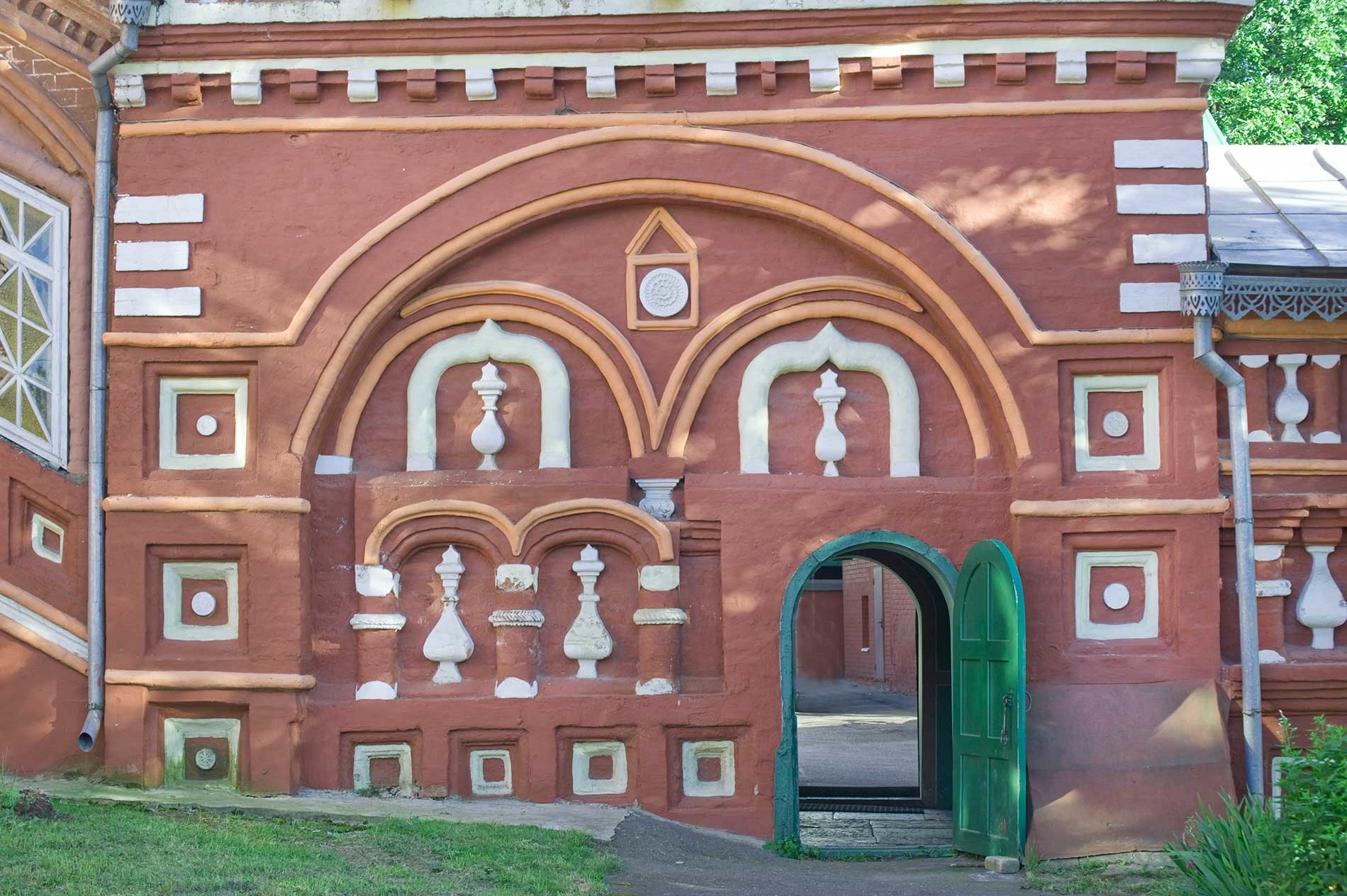
Church of the Resurrection "na Debre". West porch&stairway, north facade. August 12, 2017.
William BrumfieldAt the same
In conjunction with the tercentenary of the Romanov dynasty in 1913, Nicholas II visited the Resurrection Church ensemble with his four daughters. During the visit, they climbed the bell tower for a view of the nearby Volga River.

Church of the Resurrection "na Debre." Southeast view with apsidal structure. Summer 1910.
Sergey Prokudin-GorskyIn the late 1930s the Resurrection Church
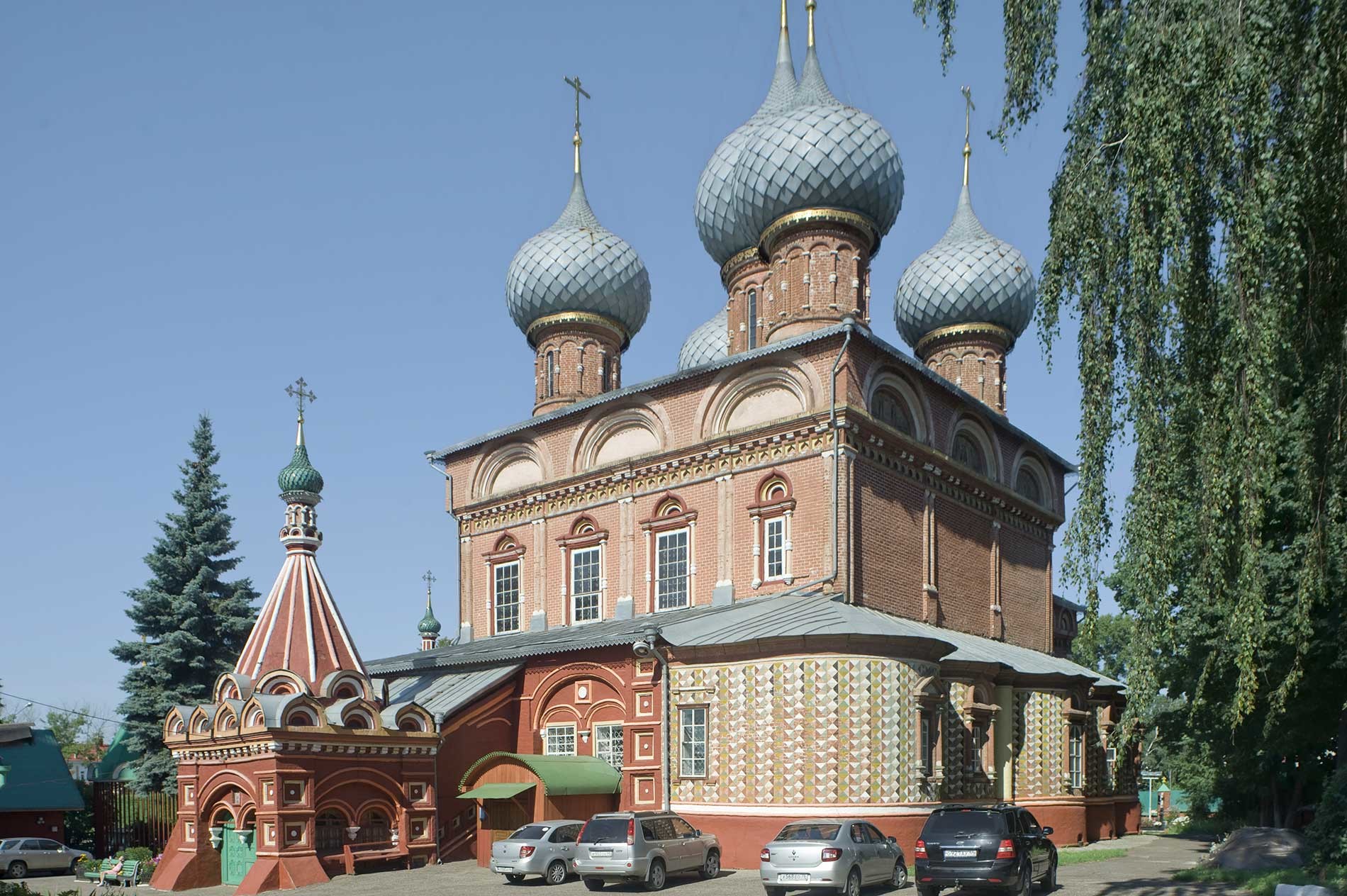
Church of the Resurrection "na Debre." Southeast view with apsidal structure. August 12, 2017.
William BrumfieldThe Church of the Znamenie Icon was closed in the 1920s, deprived of its dome and also used as a granary. Its great bell tower was demolished in 1937. In 1993, the church was returned and partially restored for use as the core of the Znamenskii Convent. Two years later, work began on rebuilding the bell tower. Completed in 2001, the tower has again assumed a place of pride overlooking the Volga. My view from the northeast shows the entire resurrected ensemble with the majestic Volga in the background.
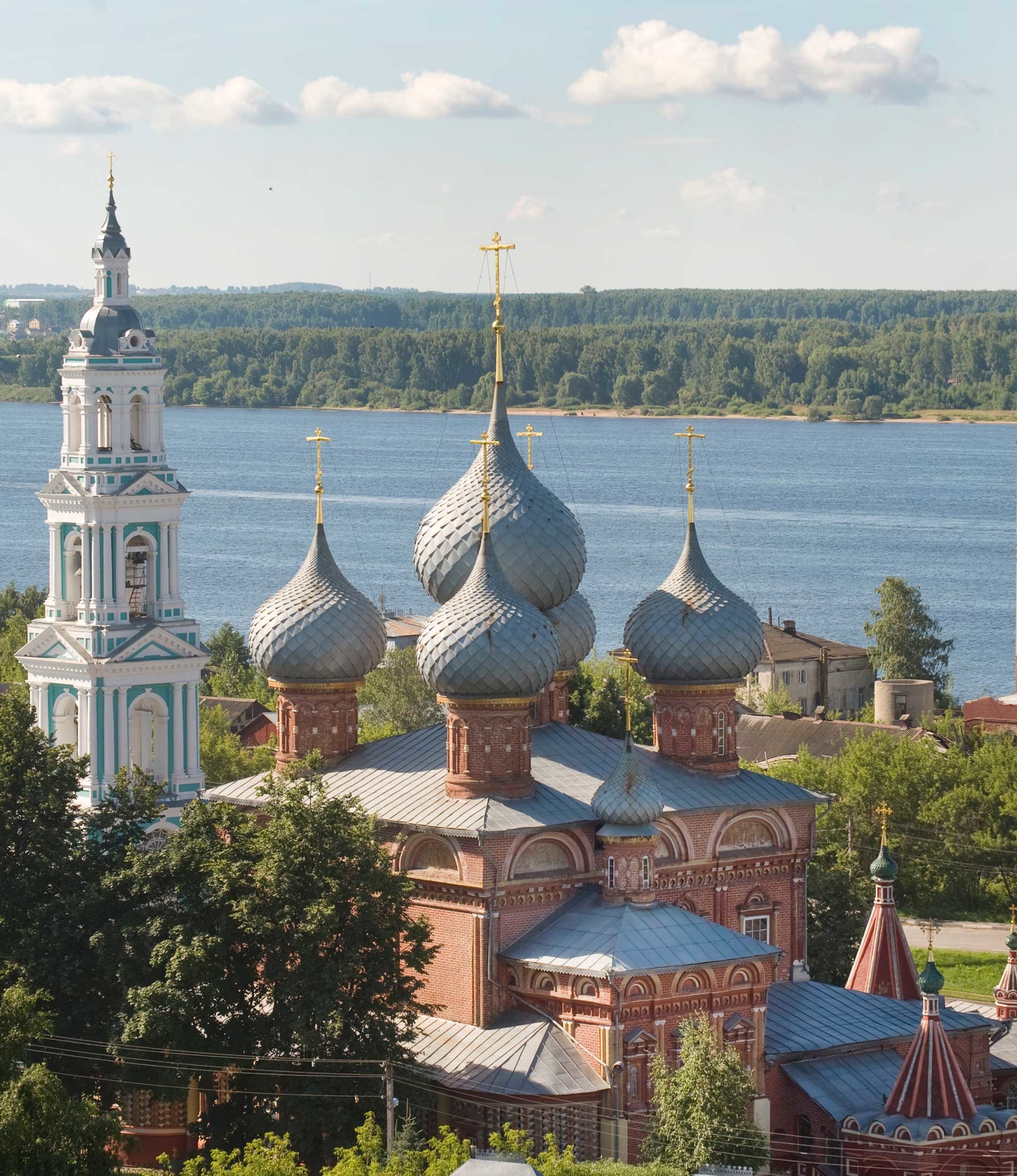
Church of the Resurrection "na Debre." Northeast view with Chapel of the Three Prelates. Background: Bell tower&Volga River. August 12, 2017.
William BrumfieldIn the early 20th century the Russian photographer Sergei Prokudin-Gorsky devised a complex process for color photography. Between 1903 and 1916 he traveled through the Russian Empire and took over 2,000 photographs with the process, which involved three exposures on a glass plate. In August 1918, he left Russia and ultimately resettled in France with a large part of his collection of glass negatives. After his death in Paris in 1944, his heirs sold the collection to the Library of Congress. In the early 21st century the Library digitized the Prokudin-Gorsky Collection and made it freely available to the global public. A number of Russian websites now have versions of the collection. In 1986 the architectural historian and photographer William Brumfield organized the first exhibit of Prokudin-Gorsky photographs at the Library of Congress. Over a period of work in Russia beginning in 1970, Brumfield has photographed most of the sites visited by Prokudin-Gorsky. This series of articles will juxtapose Prokudin-Gorsky’s views of architectural monuments with photographs taken by Brumfield decades later.
If using any of Russia Beyond's content, partly or in full, always provide an active hyperlink to the original material.
Subscribe
to our newsletter!
Get the week's best stories straight to your inbox